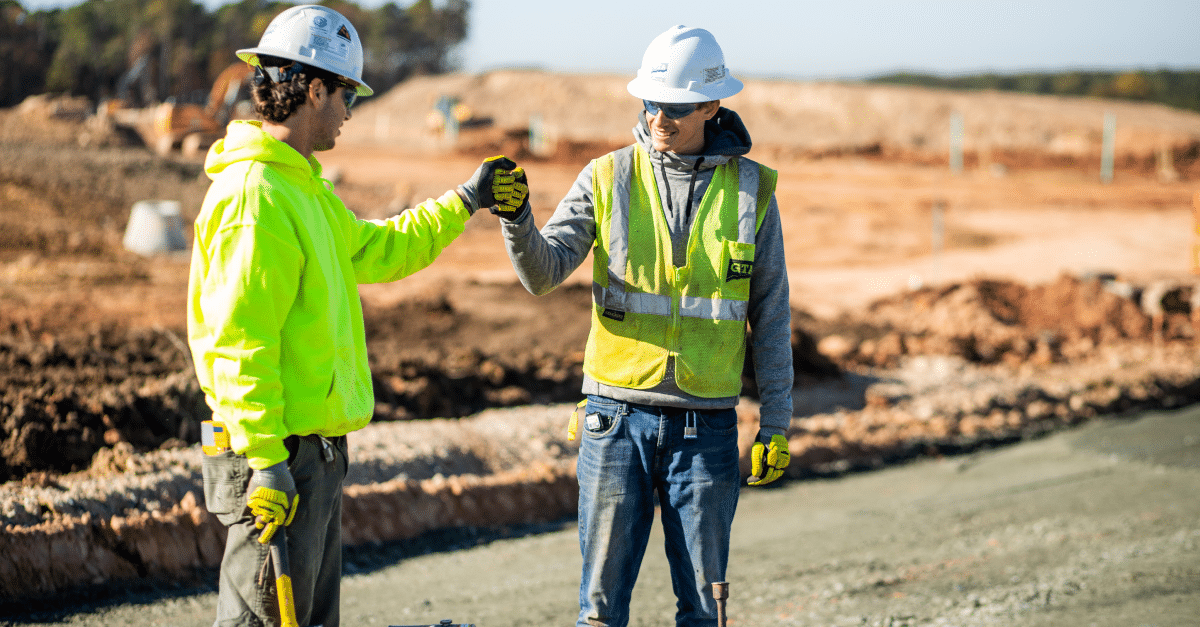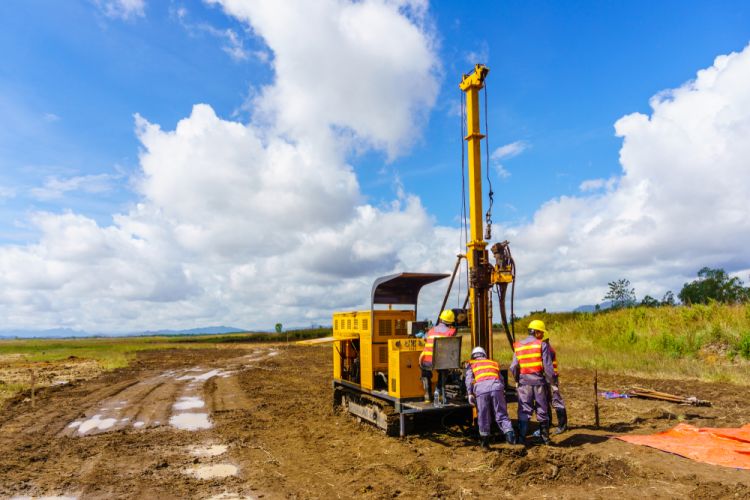The 20-Second Trick For Geotechnical Engineering For Construction Projects
The 20-Second Trick For Geotechnical Engineering For Construction Projects
Blog Article
See This Report about Geotechnical Engineering For Construction Projects
Table of ContentsThe Buzz on Geotechnical Engineering For Construction ProjectsNot known Facts About Geotechnical Engineering For Construction ProjectsGet This Report on Geotechnical Engineering For Construction ProjectsGeotechnical Engineering For Construction Projects Can Be Fun For AnyoneThings about Geotechnical Engineering For Construction ProjectsGeotechnical Engineering For Construction Projects Can Be Fun For EveryoneThe Greatest Guide To Geotechnical Engineering For Construction Projects
and Kovacs, W. (1981 ), An Introduction to Geotechnical Engineering, Prentice-Hall, Inc. Deep Check Technology (2023 ): Deep Scan Technology discovers hidden frameworks at the site of Denmark's tallest structure. "Geofrost Coring". GEOFROST. Gotten 20 November 2020. Han, Jie (2015 ). Principles and Practice of Ground Renovation. Wiley. ISBN 9781118421307. RAJU, V. R.Ground Improvement Technologies and Case Histories. Singapore: Study Publishing Services. p. 809. ISBN978-981-08-3124-0. Ground Enhancement Concepts And Applications In Asia. Pariseau, William G. (2011 ). Layout evaluation in rock mechanics. CRC Press. Hegde, A.M. and Palsule P (Geotechnical Engineering for Construction Projects).S. (2020 ), Performance of Geosynthetics Reinforced Subgrade Subjected to Repeated Automobile Plenties: Speculative and Mathematical Studies.
Cengage Learning, Stamford, 666 p. Atkinson, J., 2007. The technicians of soils and structures. Taylor & Francis, N.Y., 442 p. Floating Offshore Wind Generators: Responses in a Sea state Pareto Ideal Designs and Financial Evaluation, P. Sclavounos et al., October 2007. Nicholson, D, Tse, C and Penny, C. (1999 ). The Observational Approach in ground design concepts and applications.
Getting My Geotechnical Engineering For Construction Projects To Work
Laboratory and area testing plays a crucial duty in this process. By removing samples from the planet's subsurface and applying a collection of examinations, geotechnical engineers can forecast the behavior of dirt layers and assess their suitability for numerous building efforts. The essence of geotechnical design in civil engineering can not be overemphasized, attributable to several variables: The first action in any kind of geotechnical study entails establishing the dirt type at the building site.
Understanding these characteristics makes sure that only appropriate soil kinds are chosen for the development, thus preventing prospective structural failings. The foundation acts as the bedrock of any kind of building task. Picking the appropriate foundation type is a choice that depends upon the thorough evaluation provided by geotechnical engineering. This guarantees the long life and security of frameworks by suiting the lots they will certainly bear.

Geotechnical website investigation is a crucial action in the planning and execution of any type of construction project. It includes the collection and evaluation of data connected to the physical residential properties of dirt and rock under a suggested building site. This details is essential for the layout and building and construction of safe, secure, and lasting frameworks.
Excitement About Geotechnical Engineering For Construction Projects
In this blog site, we will look into the importance of geotechnical site investigation, its various parts, and just how it benefits building and construction jobs. Geotechnical website investigation, additionally understood as subsurface exploration, includes a series of tasks aimed at establishing the soil, rock, and groundwater problems at a construction site. The key goals are to identify possible geotechnical risks, evaluate the design residential properties of subsurface products, and offer recommendations for the design and construction of foundations, preserving walls, and various other structures.
This might include geological maps, airborne photographs, previous examination reports, and historic information. The desk study helps in recognizing prospective geotechnical problems and planning the subsequent fieldwork. Adhering to the workdesk research, a website reconnaissance is carried out to visually evaluate the site and its surroundings. This includes observing the topography, drain patterns, existing frameworks, vegetation, and any type of indications of instability or disintegration.
Getting The Geotechnical Engineering For Construction Projects To Work
Shallow examination pits are excavated to straight observe and sample the soil and rock. This approach is useful for studying the upper layers of the subsurface and determining near-surface risks. Non-invasive geophysical methods, such as seismic refraction, ground-penetrating radar (GPR), and electrical resistivity tomography (ERT), are utilized to map subsurface conditions and identify anomalies.
Soil and rock examples gathered during the field examination go through lab testing to identify their physical and mechanical residential properties. Typical research laboratory tests consist of grain size analysis, Atterberg restrictions, compaction tests, triaxial shear examinations, and combination examinations. These tests give necessary data for geotechnical evaluation and style. The information gathered from the desk research, site reconnaissance, area investigation, and laboratory screening are assessed and translated to create a comprehensive understanding of the subsurface conditions.
The primary benefit of geotechnical website investigation is making certain the security and security of frameworks. By recognizing the subsurface conditions, engineers can develop structures and other architectural aspects that can stand up to the loads and environmental pressures they will go through. This reduces the risk of negotiation, subsidence, and structural failing.
Geotechnical Engineering For Construction Projects for Dummies
This makes sure reliable and safe building techniques. Geotechnical site investigations are usually needed by building codes and policies.
This info is very useful for job managers, engineers, and service providers in creating reasonable routines, budgets, and backup strategies. Geotechnical Engineering for Construction Projects. High-Rise Structure in a Coastal AreaIn a seaside city, a skyscraper domestic structure was intended on a site with presumed loose sand down payments and a high water table. A comprehensive check geotechnical investigation, consisting of borehole boring, CPT, and geophysical studies, was carried out
Top Guidelines Of Geotechnical Engineering For Construction Projects
Based upon these searchings for, the structure style was modified to consist of deep heap structures prolonging into stable strata, and ground improvement strategies, such as vibro-compaction, were implemented to mitigate liquefaction threats. This aggressive strategy made certain the safety and security and security of the structure while preventing expensive post-construction remediation. Facilities Advancement on a Sloping TerrainA significant facilities task, entailing the building and construction of a highway and bridges, was intended on a hilly surface with steep slopes.

The Leaning Tower of Pisa (Italy), a famous building marvel, is notorious for its unintentional tilt from significant geotechnical issues. The tower's structure was improperly designed to deal with the soft, unpredictable soil under it, leading to unequal negotiation and its distinct lean. Our world is dotted with impressive infrastructure projectsfrom looming high-rise buildings to stretching bridgesall standing statement to the development of the various building devices and approaches available.
Geotechnical engineering is a specific area within civil engineering that focuses on researching the habits of earth products. This branch digs deep right into the groundinvestigating just how the soil, rock, and groundwater at a building and construction site can influenceand be affected bythe framework that we erect on and right into them. Prior to a single block is laid or a concrete foundation put, geotechnical engineers probe right into the earthgathering critical information concerning the site's dirt composition, rock framework, and groundwater degrees.
Excitement About Geotechnical Engineering For Construction Projects

is a device utilized to analyze the integrity and load-bearing capability of stacks throughout installation, leveraging the principle of wave proliferation. It optimizes building efficiency by supplying real-time evaluations, therefore ensuring risk-free and reliable pile foundations. One of the useful applications of geotechnical design entails deciding and carrying out the appropriate methods for structure building and construction.
Stack driving stands for greater than the simple act of home placing architectural aspects into the ground. As a matter of fact, it is a carefully coordinated process of transferring a framework's lots past the much less secure soil layers more detailed to the surfacedown to the a lot more significant strata that exist underneath. When it comes to pile driving, consider how geotechnical designers skillfully use this technique to evenly disperse the framework's weight.
Report this page